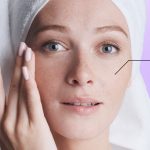Understanding Melasma: What You Need to Know
If acne is considered the primary skin issue during puberty, then pigmentation is the most common skin condition for women in their 30s. With the growing demand for lifestyle improvements, spa-based skin pigmentation treatments are gaining trust from many customers. Therefore, as a professional skincare specialist, you not only need to be proficient in treatment procedures but also have a solid understanding of basic skin knowledge to provide the most effective advice to clients.
- What is Pigmentation? Pigmentation is a skin condition characterized by the appearance of dark brown or significantly darker patches compared to other areas of the skin. This condition results from an increased production of the melanin pigment in the basal and middle layers, creating unsightly discolored patches.
Pigmentation can occur in various locations on the body, but it is most commonly found on the facial and sun-exposed areas.
- Who is Most at Risk of Pigmentation? All women of reproductive age (20-50 years old) are at high risk of pigmentation, especially during pregnancy and postpartum periods. Men can also experience pigmentation but with lower susceptibility. Additionally, research indicates that the risk of developing pigmentation is influenced by factors such as geography, ethnicity, and skin color. Women with darker skin tones in Asia have a higher incidence of pigmentation compared to white-skinned women in other continents.
Many clients often confuse pigmentation with freckles, and sometimes, skincare consultants also make this mistake. However, pigmentation and freckles are two entirely different skin conditions. It’s crucial to distinguish:
Freckles: Also caused by an increase in pigmentation, freckles are very small, about the size of a pinhead or sesame seed. The color of freckles varies widely, including dark brown, light brown, yellow, gray, black, red, etc. Importantly, their intensity changes depending on sunlight exposure.
Pigmentation: Pigmentation consists of large, dark-colored patches with various degrees of intensity on the skin. This condition has a characteristic color, unlike the diversity seen in freckles. Pigmentation often appears symmetrical on both sides of the face, chin, forehead, nose, and comes in various sizes or connects into patches.
- Causes of Pigmentation Formation Pigmentation is formed due to an increased production of melanin pigments. This can originate from external influences or internal hormonal changes, sometimes a combination of both:
Environmental impacts: Lack of protection against negative effects of sunlight on the skin. Incorrect use of skincare products causing thinning and weakening of the skin. Skin diseases or contamination with mercury, lead, corticosteroids, etc. Unhealthy diet and lifestyle leading to nutrient deficiency and weakened immunity.
Internal changes in the body: Natural aging processes causing a decline in skin structure and health. Hormonal changes in the body, especially during pregnancy, postpartum, and premenopausal stages. Prolonged stress and tension. Genetic predisposition.





